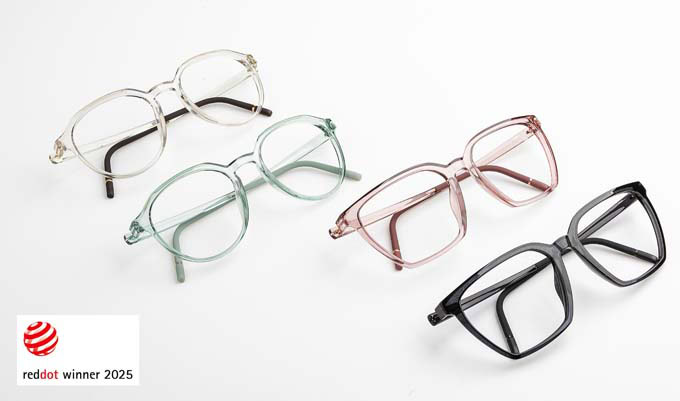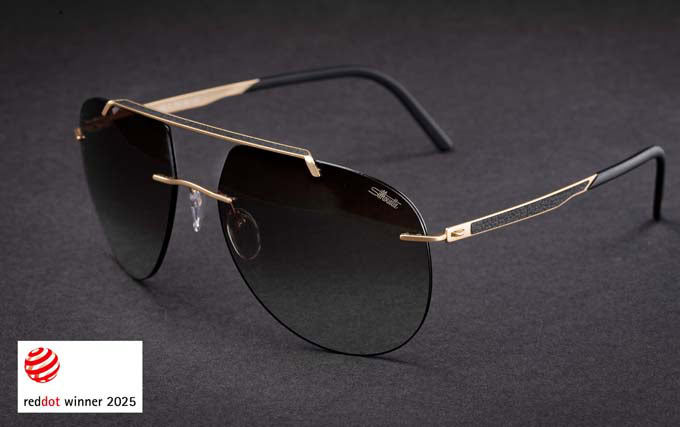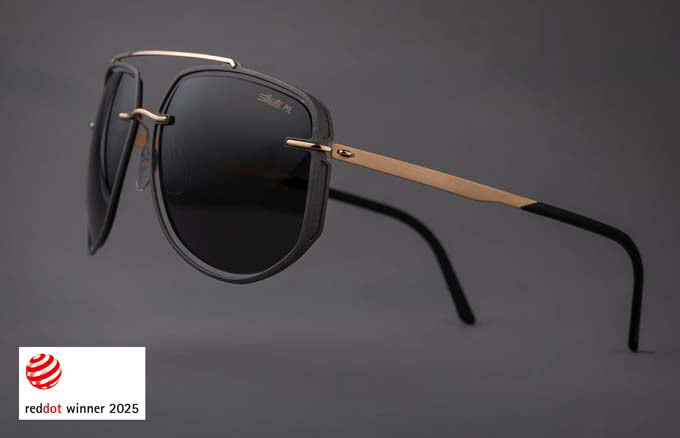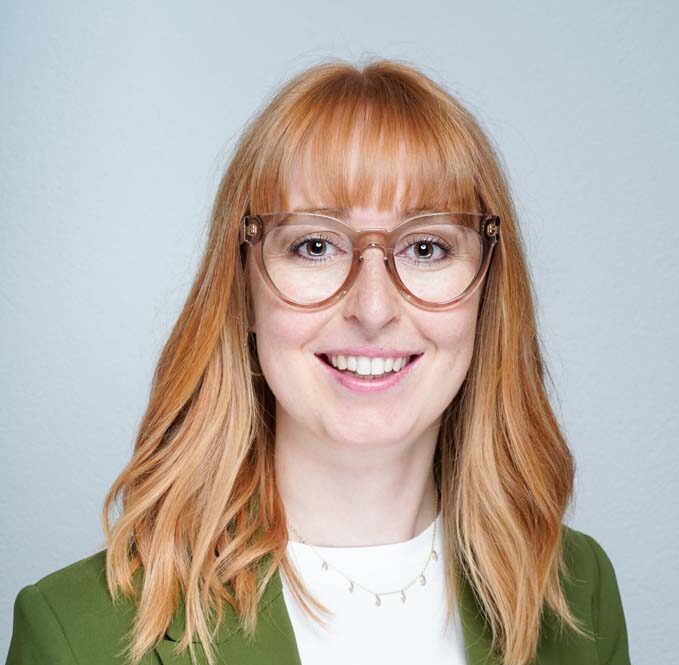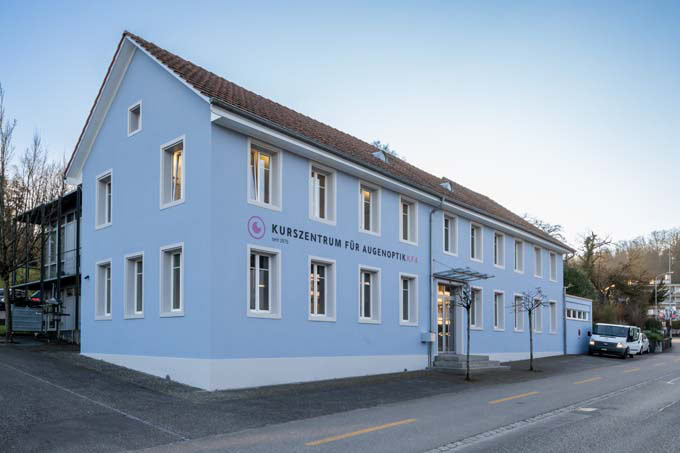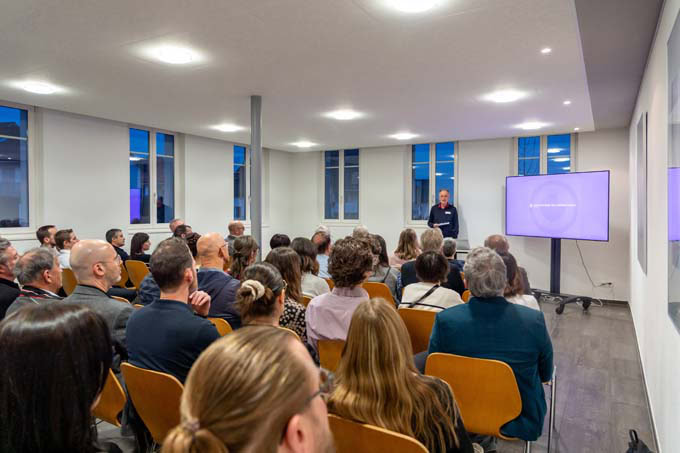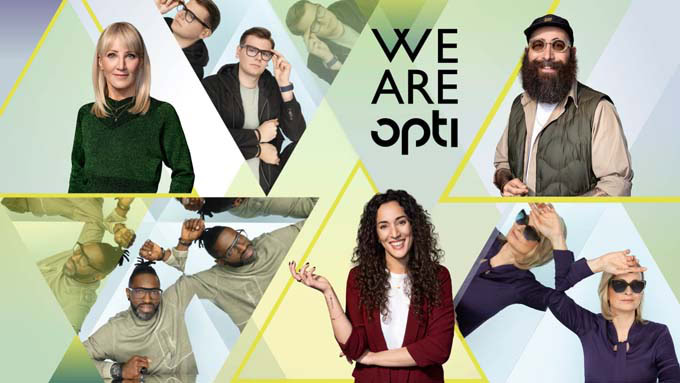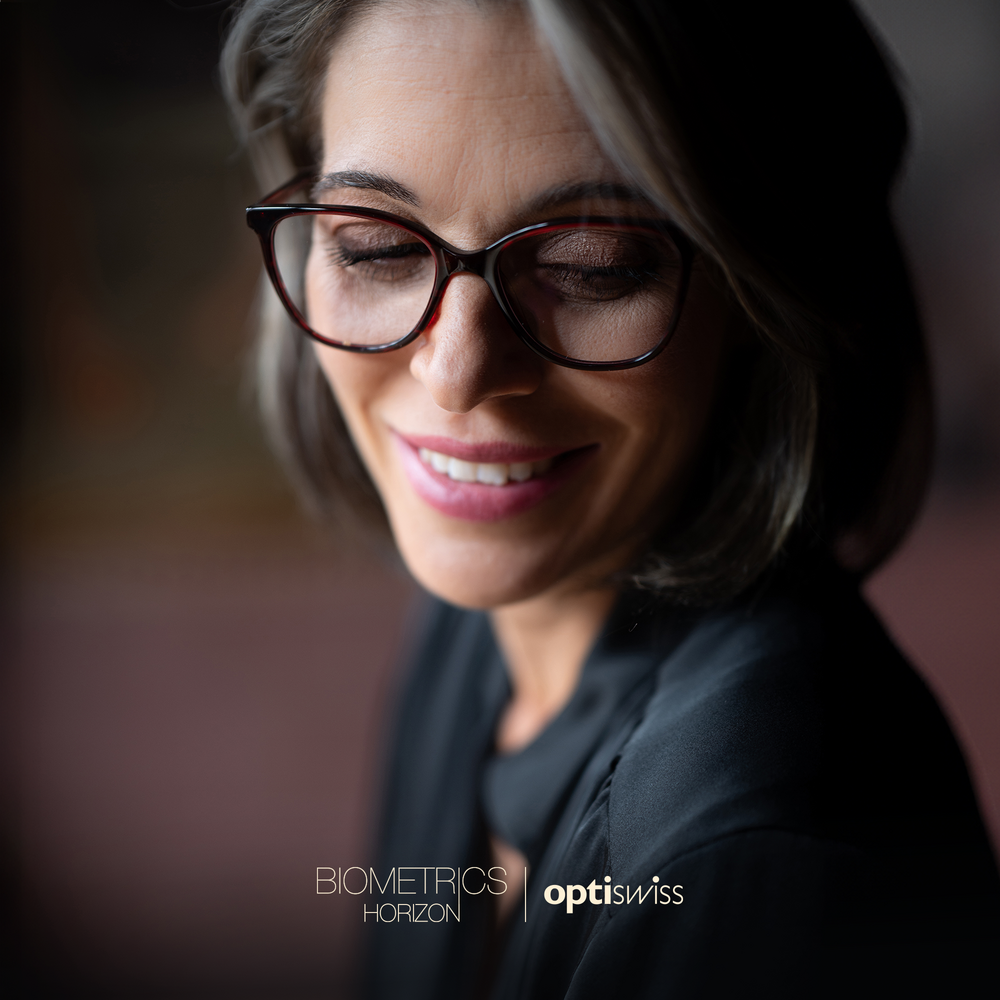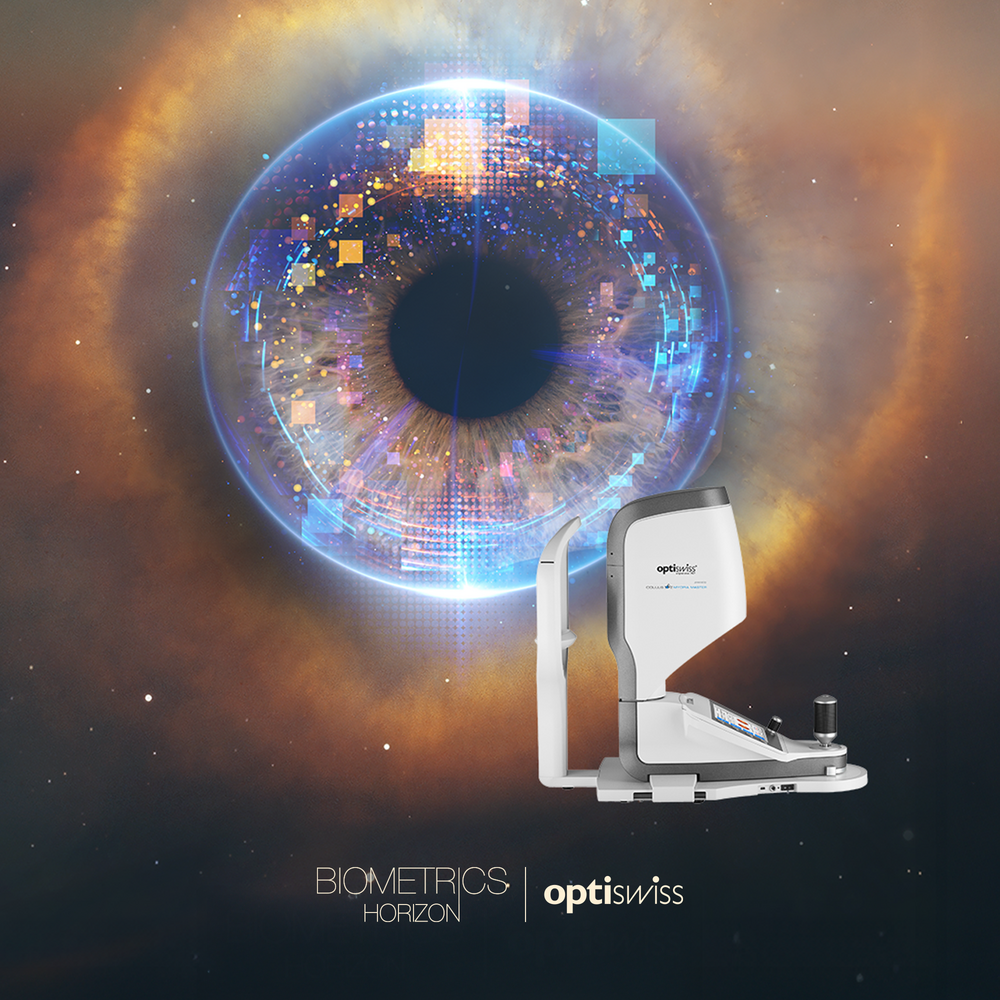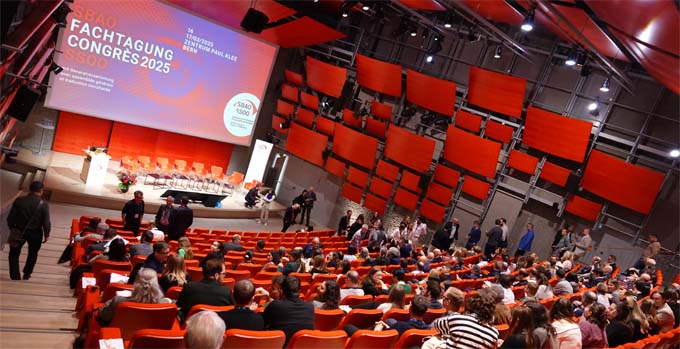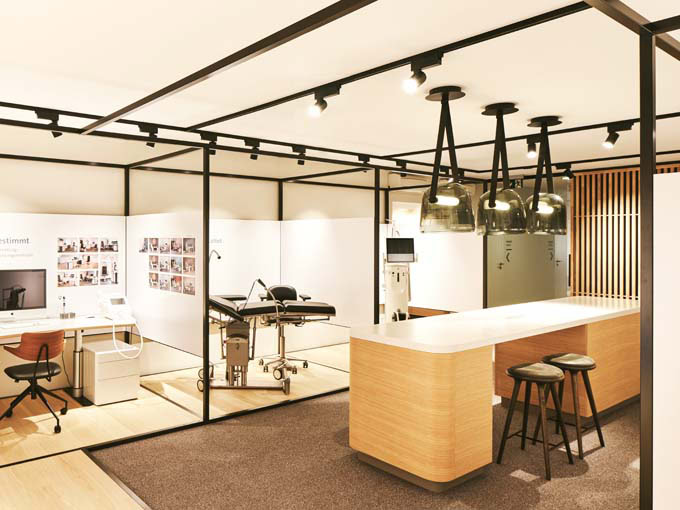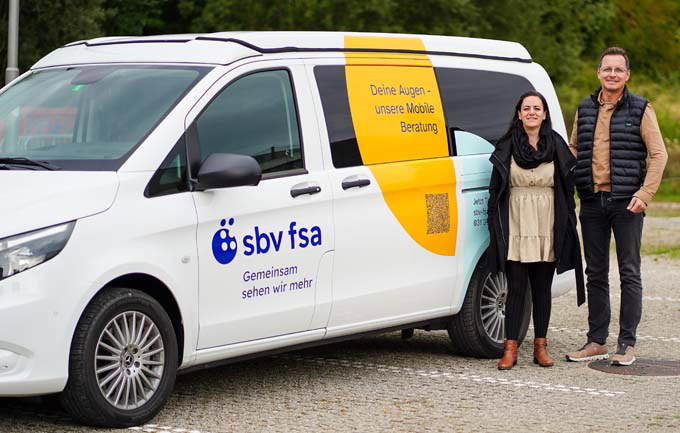The number of practices and stores in Switzerland specializing in binocular vision has doubled
Improving optometric care for people with binocular problems is a challenging goal.

Objective
Ideally, the general public would be aware that they should go for an optometric eye examination if they experience vision problems at work, for example. Parents would know who to turn to if their schoolchildren have unexpected reading problems and vision-related headaches. The reality is currently different. Many of those affected do not even know that they or their children can possibly be helped. Or they consider their problems to be normal and cannot imagine that a different and better quality of vision would be possible. The possibilities of optometry to support the performance of accommodation and binocular cooperation by means of spectacle correction, visual training or contact lenses in order to reduce visual stress have not yet been sufficiently publicized. The visual problems mentioned here are not caused by diseases, allergies, strabismus or amblyopia, but occur in 30 % of all people with healthy eyes.
Even if optometry were already fully established as the first port of call for vision problems, there is another challenge: there is currently no nationwide supply of practices or specialist stores in Switzerland that specialize in solving binocular problems.
This results in two specific tasks that should be addressed one after the other:
- Increase the number of specialist practices and stores as contacts for binocular problems through training and further education to ensure access to good care in Switzerland.
- To inform the public about the prevalence of vision problems in school children (and adults) and to raise awareness of the possibilities of optometry.
Work on the first task has already been underway for two years, since a "Binocular Vision Round Table" was set up as a Zoom meeting. At the same time, a regular training program on binocular topics has been set up at the Institute of Optometry, which will focus on the topic of BTSO from 2024: www.btso.ch.
The second task cannot be solved by one FHNW institute alone, but requires good cooperation between many professional and further education organizations in the field of ophthalmic optics and optometry and beyond. If a large-scale study to determine the frequency of visual stress in primary school children in Switzerland can be financed, this would strengthen contacts with schools and prepare a campaign to inform the public. Because the well-being of schoolchildren is close to many people's hearts, they are sure to be enthusiastic about it.
Previous history
In 2018, under the leadership of Prof. Roger Crelier and Prof. Dr. Stephanie Jainta, a project was launched to advance training in optometry and also to have an impact on the profession in Switzerland. The field of binocular vision was chosen for this project partly due to the special expertise of the staff at the Institute of Optometry in Olten. The team had a considerable list of publications on topics such as binocular eye tracking, reading research and the application of binocular methods. The project, called "Binocular Test Sequence Olten" (BTSO), was funded by the Swiss Optics Foundation until the beginning of 2025 and had various project phases. The objectives were from the outset:
- Overview and analysis of existing models that serve as the basis for a new binocular test sequence.
- Working out the decisive binocular parameters in dialogue with ophthalmology, orthoptics and optometry/ophthalmic optics on which the new sequence will be based; workshops/lectures will be organized at the IO and external experts from the various professional groups will be invited to expand the team at the Institute of Optometry.
- Development of corresponding measurement and test setups.
- Development of an evidence-based and sequenced approach to determine binocular status that can be used to determine binocular correction or intervention.
- The test forms and procedures are described clearly, in detail and comprehensibly.
- With appropriate use and procedure, the designation " ... tested according to BTSO ... " can be used.
- A systematic, multicenter, clinical trial of the procedure will follow.
Several meetings were held with experts from various professional groups in the first few years of the project to find out where there were overlaps and where there were additions. The outside perspective was particularly valuable in order to broaden one's own horizons. Literature research was carried out particularly intensively: In weekly meetings of the then six-person team at the institute, findings were collected and shared. The reference book "Perceiving in depth" (HOWARD, 2012) was the focus for a whole year. The research was then extended to include the current study situation. Another reference book, "Clinical Management of Binocular Vision" (SCHEIMAN; WICK, 2020), was an important guide for the entire project period. The contents of this book have influenced training and clinical practice in optometry worldwide on all continents.
In the second and third year of the project, the feasibility of an objective measuring device for the smallest to largest eye movements using SLO (Laser Scanning Opthalmoscope) was investigated. In collaboration with the "Laboratory for the Development of Lasers and Optical Systems FHNW" in Windisch and leading experts in Bonn and Erlangen (Germany), a model setup was realized with which structures in the center of the retina can also be made visible. At the end of 2021, important findings on the feasibility in principle were generated, but the biggest challenge was the stable, binocular centering of the patient's eyes. Although it would be technically possible for patients to wear prescription lenses or spectacles during a measurement, the exact viewing location would have to be maintained with extreme precision. In practical use, it would therefore be necessary to fix the patient in front of the device so firmly that even the smallest movements of the head would be made impossible. Ultimately, this approach to developing an objective measurement sequence was abandoned due to the expected high development costs.
Development of a learning app
From 2021, the available findings and experience were then summarized and reassessed. This was the actual start of the now well-known BTSO test sequence. In addition to other publications, the main impetus came from a series of studies published under the name "BAND 1-3" (HUSSAINDEEN 2017-2018). From the outset, the aim was to develop a simple and cost-effective test battery for accommodative and binocular abnormalities. To this end, the complete standard values of the most important measurements were determined in BAND 1, consisting of five accommodative and eleven binocular tests. 920 school children in South India aged between 6 and 17 years were examined, half from urban and half from rural areas. In BAND 2, the frequency and distribution of non-strabismic classes was analyzed (HUSSAINDEEN; RAKSHIT; et al., 2017). The classification used there was closely based on the established "integrative analysis" by Scheiman and Wick. Abnormalities were found in 30 % of the children examined (n=283). The minimal test battery is the result of the analyses of the BAND 3 study (HUSSAINDEEN; RAKSHIT et al., 2018). The accuracy of individual tests and test combinations was examined. The aim was to determine the most effective test or the most effective test battery. This test battery was optimized for the most frequently occurring classes: convergence insufficiency and accommodation inflexibility.
Based on these studies, the path for BTSO was rethought. One advantage of this minimal test battery is that it can be used for screening by both professionals and optometric laypersons. If a schoolchild or adult tests abnormally in the screening, there is a high probability of an accommodative or binocular abnormality. This result would then lead to a referral for a differentiated optometric examination.
The few tests in the minimal test battery also provide an important contribution to the data used to determine binocular status. The 9 most important binocular and accommodative classes are: Convergence and Divergence Insufficiency, Convergence and Divergence Excess, Basic Esophoria and Exophoria, Accommodative Insufficiency, Excess and Inflexibility. To determine their status, a grouping is usually made from the wealth of data. There are main signs, which must always be present, and secondary signs, which must support the findings. In all 9 classes, the test data of the minimal tests belong to the main signs. The BTSO team therefore raised the question of whether the minimal test battery could be used to screen not just a few classes, but whether all the important 9 classes could be found in the screening. An exciting development phase began, in which a decision logic was developed so that an app could be programmed. An external partner from the field of software development was found in order to strive for a professional solution right from the start. The subsequent development of a web-based learning app created one of the most important prerequisites for tackling the first objective: To make it easier for professionals to enter or re-enter the world of binocular vision and thus improve the care situation in Switzerland. How important it is to offer an aid when there are still uncertainties about the topic was revealed in a student survey in the final semester. Even if a specialist goes into practice well-trained, they ideally need an environment in which binocular assessments are already established. This is often not the case and it was stated several times that without practical support, there is too much uncertainty to work in this area on one's own.
The BTSO learning app was introduced at the Institute of Optometry in the "Binocular Vision 1" module in the fall semester 2023. All students will have free access to the learning app and can also use the tests and evaluations in the "Clinical Optometric Practical Course". A regular continuing education program for all interested professionals with a focus on binocular analysis and correction has been set up at the Institute. Attendance of at least one further training course was defined as mandatory in order to be able to activate the app. This is intended to ensure the professional quality of BTSO users. In addition, online meetings on binocular vision are offered, to which regular invitations are sent out. Even though the goal of comprehensive care is still a long way off, there are some encouraging signs of success: within a year, the estimated number of practices and stores in Switzerland specializing in binocular vision has doubled.

BTSO studies with adults
Part of the project objectives was to research the newly defined test sequence. To this end, two multi-center studies (four centers in German-speaking Switzerland) were conducted, each involving 150 people between the ages of 18 and 38, 100 of whom had visual complaints and 50 of whom were symptom-free. The validation study compares the results of the established, complete analysis of binocular status with those of the BTSO learning app. The anamnesis study looks for matches between the questions of the newly developed anamnesis and conspicuous functional measurements. The studies have not yet been completed, but all subject measurements have been finalized. The time required has turned out to be significantly greater than was foreseeable at the beginning. Due to illness in the team, the evaluation was also significantly delayed. The selection of test subjects was also very challenging because strict criteria had to be met. Many potential test subjects therefore had to be rejected because the existing correction values of the current glasses could only deviate slightly from the newly measured values.
The background to the study is the classification of anomalies of non-strabismic binocular vision still used today, which was proposed by A. Duane in 1896 (DUANE, 1896) and supplemented in 1915 by the accommodation classes (DUANE, 1915). High frequencies of non-strabismic abnormalities are found in randomized studies: 32 % in university students (GARCÍA-MUÑOZ; et al., 2016), 32 % in adult patients of an eye clinic (FRANCO et al., 2022) and 30 % in children and adolescents in South India (HUSSAINDEEN; RAKSHIT et al., 2017). The classes indicate whether the problems are caused by either binocular cooperation or accommodation. Over time, these classes have largely been retained and only slightly expanded, such as by Scheiman and Wick with their "Integrative Analysis". The division into 9 individual classes enables specific intervention if visual performance is reduced despite healthy eyes and daily visual tasks lead to subjective complaints. Possible interventions would then be, for example, corrective spectacles with near additions and prisms or visual training. However, the concept is also called into question, as people in each of these classes can also be symptom-free (CACHO-MARTÍNEZ; et al., 2014).
Our own study found a frequency of abnormalities approaching 17 % in the 100 symptomatic subjects. There are some challenges that we encountered during the evaluation: Errors can easily occur when transferring the measured values entered manually on test protocols into the data table. To ensure the accuracy of all data, we checked our data a total of three times at different times. In the evaluation, we take a path that has not yet been described in the literature: we program the evaluation logic for detailed status determination in order to avoid manual evaluation errors. The criteria required for this have been described quite well in some studies, but nowhere completely. This shows that the evaluation logic has not been thought through to the end in comparable studies. When evaluating manually, clinical experience in data grouping is important in order to obtain reliable results. At the same time, however, there is a susceptibility to error that can hardly be calculated. We are looking forward to our results and will try to finalize them in 2025. We will certainly report on this here.
Planned developments
In the binocular vision working group at the Institute of Optometry, we have already drawn up an initial plan for examining 700 primary school children for binocular and accommodative abnormalities in a large-scale study. An important goal is to find out the frequency of non-strabismic visual problems in schoolchildren in Switzerland. In addition, we can use the measurements of all important visual functions to determine our own standard values and calculate a very specific test battery, similar to the South Indian study. In our view, these scientific findings are a necessary basis for introducing screening for non-strabismic features at all elementary school. This would pave the way for schoolchildren with vision problems to be identified first and then sent to the right place for treatment. As a non-profit research institution, the Institute of Optometry is a credible player. The goal of informing and sensitizing the Swiss public mentioned at the beginning could thus be taken a big step forward. In particular, the frequently existing and rarely recognized vision problems of schoolchildren would receive special attention. Over time, more and more children will benefit from correction of their non-strabismic abnormalities. Many of these children can be spared the experience of frustration in reading and failure due to their visual impairment. When this point is reached, no one will be able to understand why so little has been done for decades to detect these visual problems.
The planned study would take two to three years and cost around CHF 250,000, with the earliest possible start date being 2026. Cooperation with experts from the universities of education and health research is essential for such a large-scale project. The automated evaluations of the adult study will be helpful because exactly the same measurements are also carried out on children. Our experience with optometric measurements and data management are further good prerequisites for the successful completion of this study. Discussions with foundations and key players in optometry in Switzerland are planned for funding. For possible support, suggestions and questions, please write to: volkhard.schroth@fhnw.ch.
Literature:
CACHO-MARTÍNEZ, P.; GARCÍA-MUÑOZ, Á.; RUIZ-CANTERO, M. T. Is there any evidence for the validity of diagnostic criteria used for accommodative and nonstrabismic binocular dysfunctions? J Optom, 7, n. 1, p. 2-21, 2014 Jan-Mar 2014.
DUANE, A. A new classification of the motor anomalies of the eye: based upon physiological principles, together with their symptoms, diagnosis, and treatment. New York: Vail, J.H., 1896.
DUANE, A. Anomalies of the Accommodation Clinically Considered. Transactions of the American Ophthalmological Society, 14, n. Pt 1, 1915 1915.
FRANCO, S.; MOREIRA, A.; FERNANDES, A.; BAPTISTA, A. Accommodative and binocular vision dysfunctions in a Portuguese clinical population. Journal of Optometry, 15, n. 4, p. 271-277, 2022.
GARCÍA-MUÑOZ, Á.; CARBONELL-BONETE, S.; CANTÓ-CERDÁN, M.; CACHO-MARTÍNEZ, P. Accommodative and binocular dysfunctions: prevalence in a randomized sample of university students. Clinical & experimental optometry, 99, n. 4, 2016 Jul 2016.
HOWARD, I. P. Perceiving in Depth, Volume 1: Basic Mechanisms. New York: Oxford University Press, USA, 2012. 9780199764143.
HUSSAINDEEN, J. R.; RAKSHIT, A.; SINGH, N. K.; GEORGE, R. et al. Prevalence of non-strabismic anomalies of binocular vision in Tamil Nadu: report 2 of BAND study. Clin Exp Optom, 100, n. 6, p. 642-648, Nov 2017.
HUSSAINDEEN, J. R.; RAKSHIT, A.; SINGH, N. K.; SWAMINATHAN, M. et al. The minimum test battery to screen for binocular vision anomalies: report 3 of the BAND study. Clin Exp Optom, 101, n. 2, p. 281-287, Mar 2018.
HUSSAINDEEN, J. R. G., R; Swaminathan, M; et al. Binocular vision anomalies and normative data (BAND) in Tamil Nadu - study design and methods. Vis Dev Rehabil, 1, p. 260-271, 2015.
MAN, M.; WICK, B. Clinical Management of Binocular Vision. Philadelphia: Wolters Kluwer. Lippincott Williams & Williams, 2020. 9781496399755.












